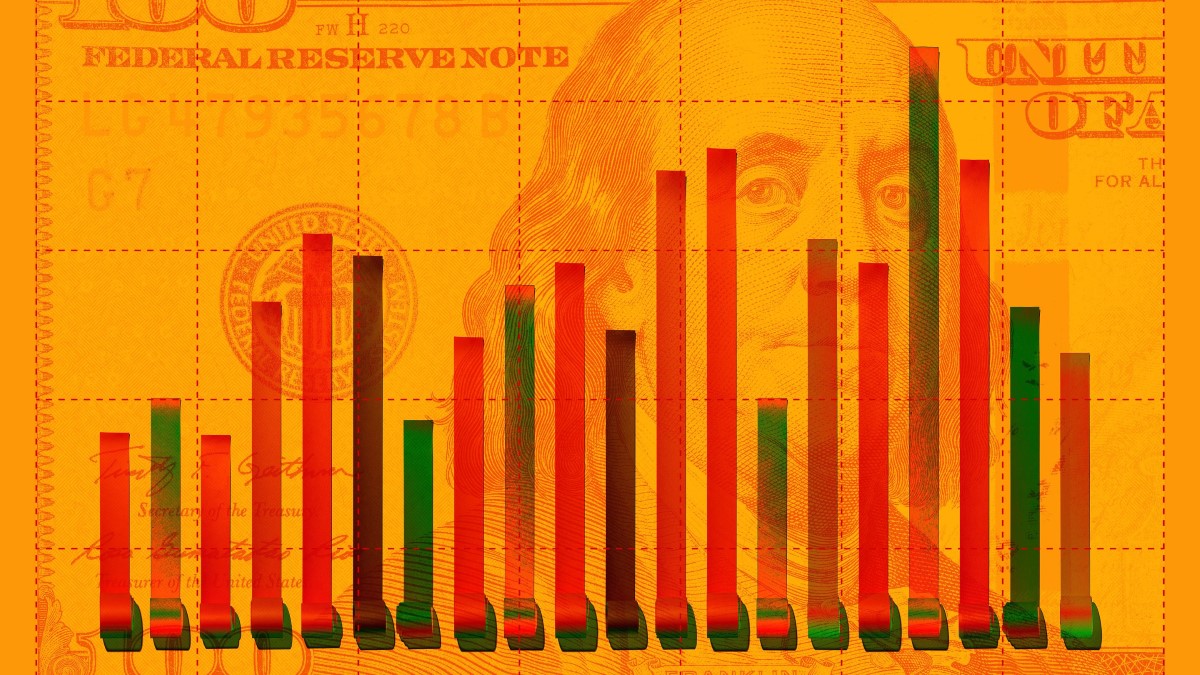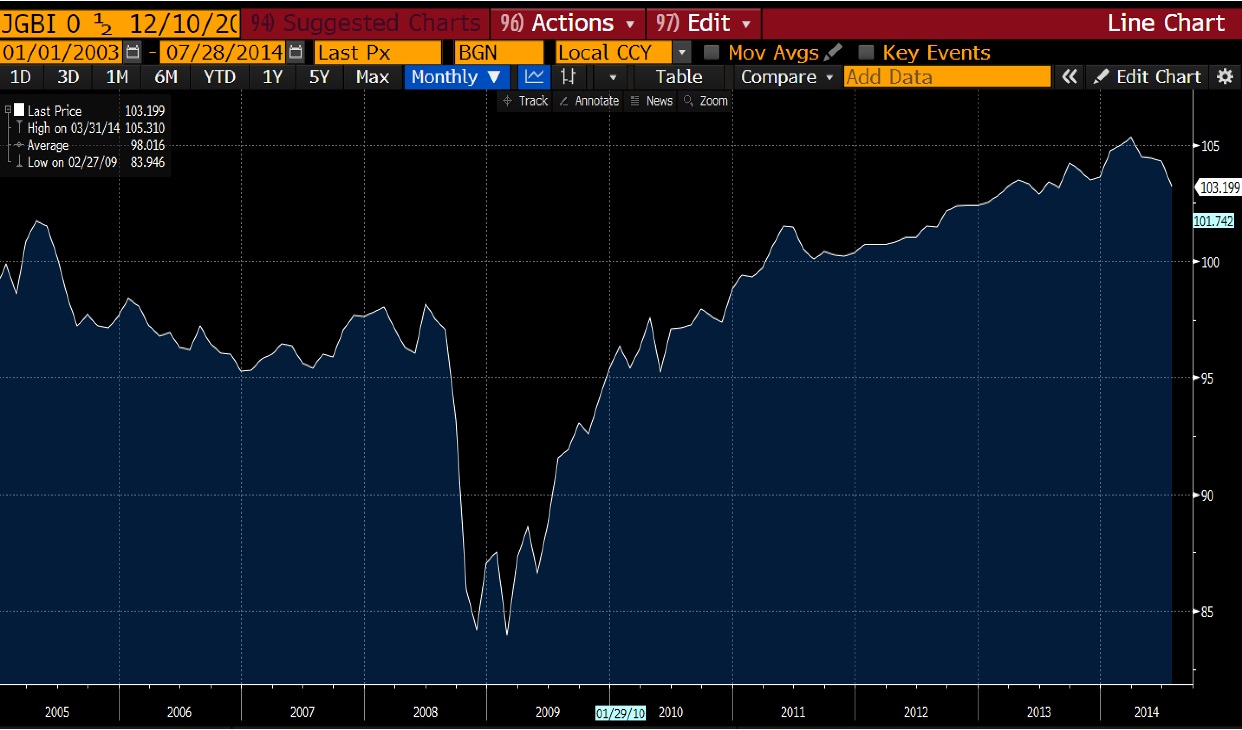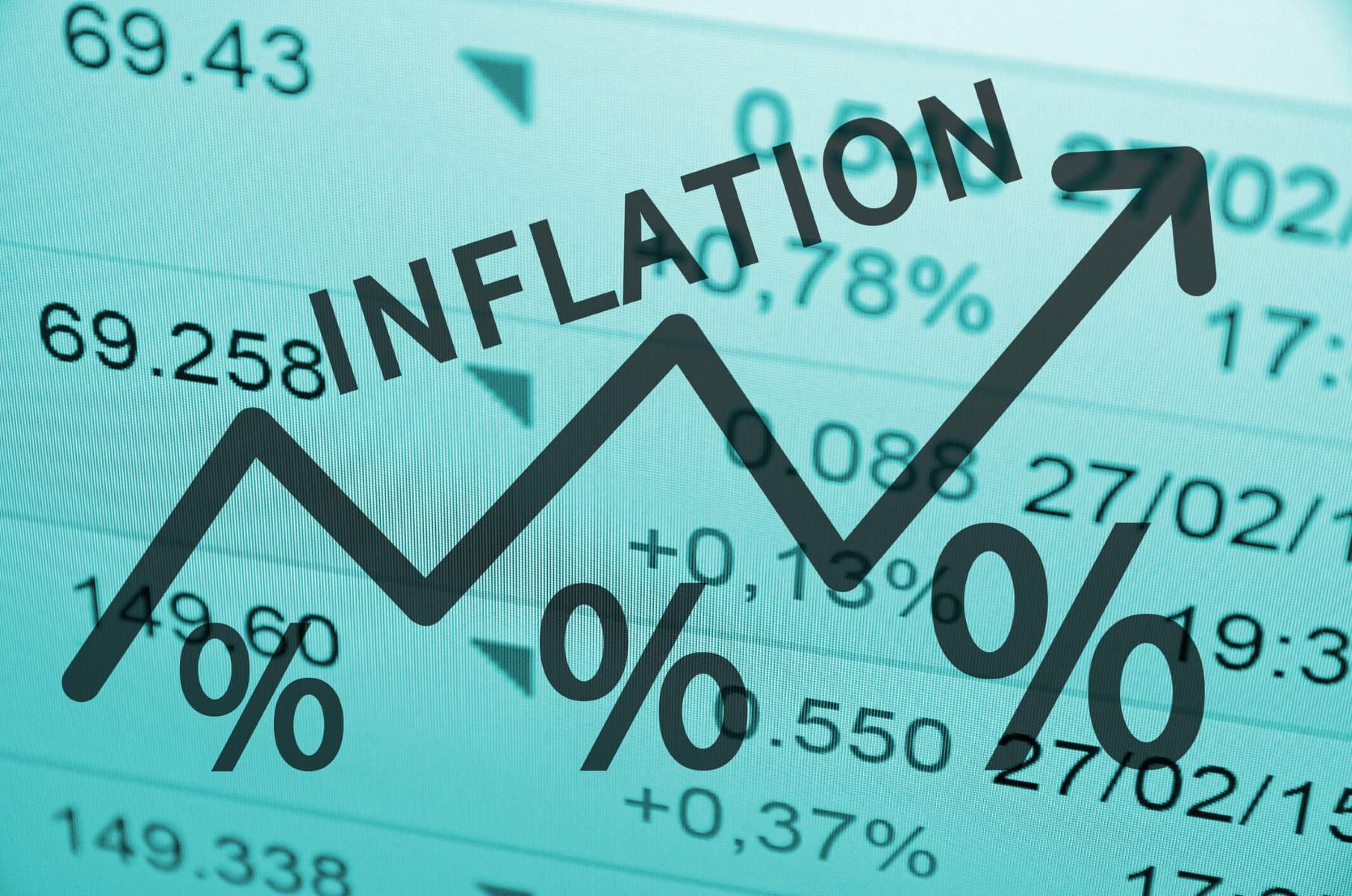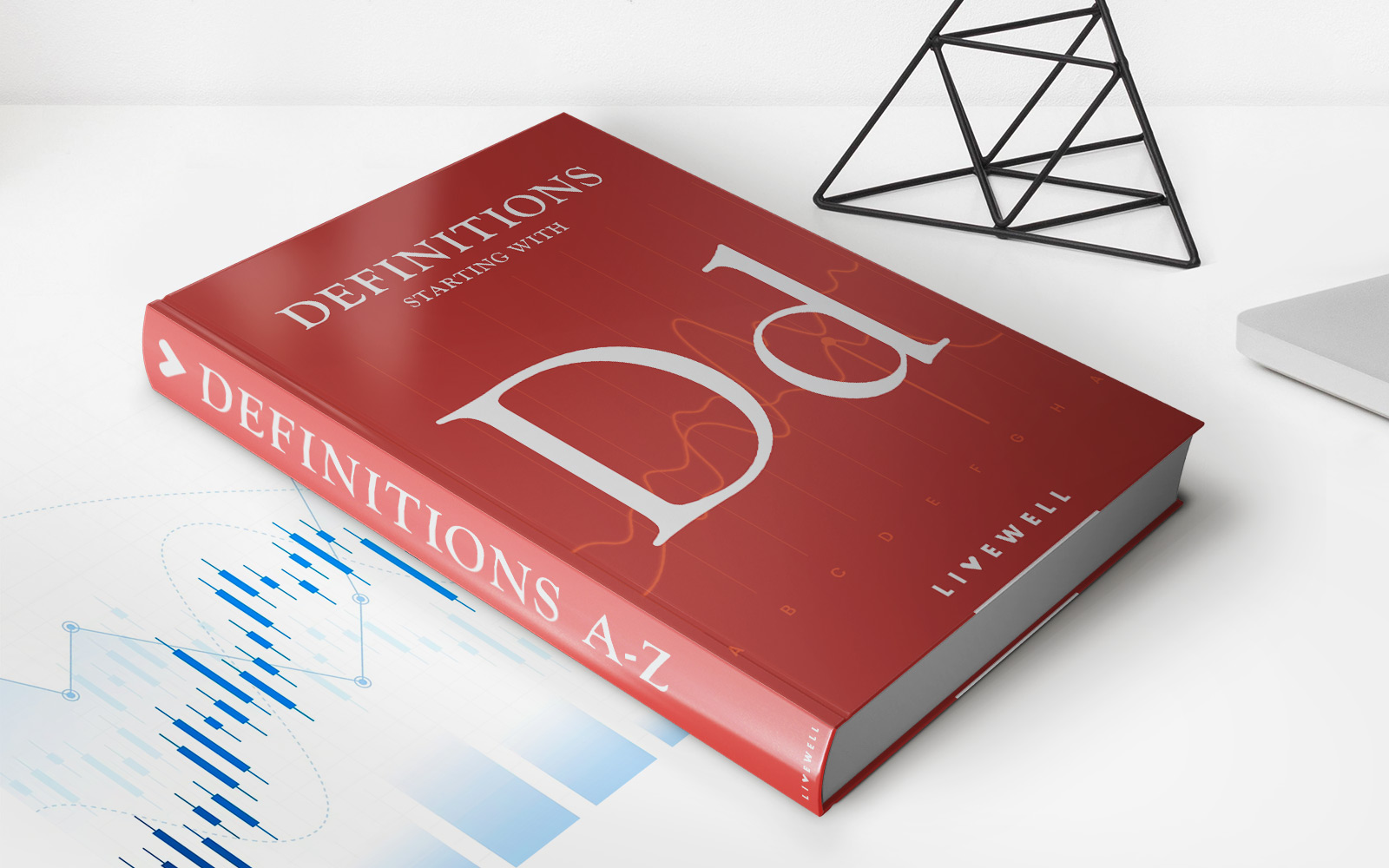Home>Finance>Why Does Inflation Increase Uncertainty In The Markets?
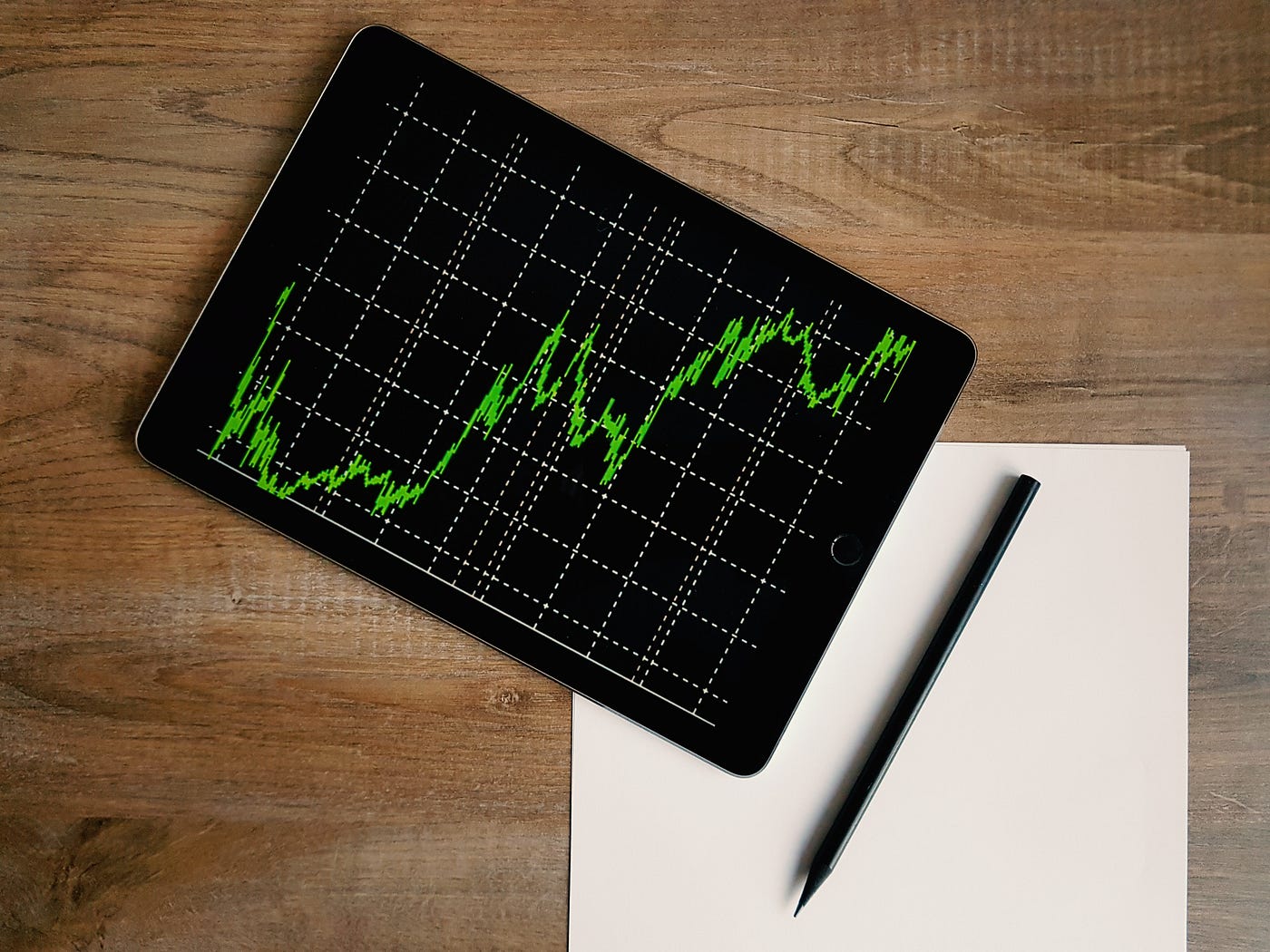

Finance
Why Does Inflation Increase Uncertainty In The Markets?
Published: October 19, 2023
Discover how inflation impacts the financial markets and increases uncertainty. Explore the relationship between inflation and finance and gain insights for better decision-making.
(Many of the links in this article redirect to a specific reviewed product. Your purchase of these products through affiliate links helps to generate commission for LiveWell, at no extra cost. Learn more)
Table of Contents
- Introduction
- Definition of Inflation
- Relationship between Inflation and Uncertainty in the Markets
- Impact of Inflation on Investor Behavior
- Market Volatility and Inflation
- Role of Central Banks in Managing Inflation and Uncertainty
- Case Studies: Examples of Inflation-induced Uncertainty in the Markets
- Strategies for Investors to Navigate Inflation-Related Uncertainty
- Conclusion
Introduction
Inflation is a term that is often heard in financial discussions, economic reports, and media headlines. It refers to the general increase in prices of goods and services over time. While moderate inflation is considered healthy for an economy, high or unpredictable inflation can lead to increased uncertainty in the markets.
Uncertainty refers to the lack of predictability or stability in market conditions, which can arise due to various factors such as economic instability, geopolitical tensions, and changes in government policies. When inflation levels are high or volatile, it can create additional layers of uncertainty for investors and market participants.
In this article, we’ll explore the relationship between inflation and uncertainty in the markets. We’ll delve into the impact of inflation on investor behavior, market volatility, the role of central banks in managing inflation and uncertainty, and provide strategies for investors to navigate through inflation-induced uncertainty.
By understanding the dynamics between inflation and uncertainty, investors can make more informed decisions and develop strategies to mitigate risks in an ever-changing market environment.
Definition of Inflation
Inflation can be defined as the sustained increase in the general price level of goods and services in an economy over a period of time. It is usually measured by the Consumer Price Index (CPI), which tracks the changes in the prices of a basket of commonly purchased goods and services.
There are various factors that can contribute to inflation. Demand-pull inflation occurs when there is excessive demand for goods and services relative to their supply, leading to upward pressure on prices. Cost-push inflation, on the other hand, occurs when the costs of production, such as wages or raw materials, increase, resulting in businesses passing on these higher costs to consumers.
Inflation is categorized into different types based on its intensity. Mild inflation, or low inflation, refers to a gradual and moderate increase in prices. This type of inflation is generally viewed as beneficial for economic growth as it encourages consumer spending and investment. However, when inflation reaches excessive levels, it is referred to as hyperinflation, which erodes the purchasing power of currency and can lead to economic instability and social unrest.
Inflation is a natural occurrence in most economies, but it is important to maintain a balance. Central banks and monetary authorities play a crucial role in managing inflation to ensure price stability and maintain optimal economic conditions.
Now that we have a clear understanding of what inflation is, let’s explore how it relates to uncertainty in the markets and its impact on investor behavior.
Relationship between Inflation and Uncertainty in the Markets
There is a strong relationship between inflation and uncertainty in the markets. When inflation levels are high or unpredictable, it creates a sense of uncertainty among investors and market participants. This uncertainty can manifest in various ways and have wide-ranging implications for the economy and financial markets.
Firstly, high or unpredictable inflation erodes the purchasing power of individuals and businesses. As the cost of living and production increases, consumers have less disposable income to spend, leading to a decrease in consumer spending and a slowdown in economic growth. This can create a cautious and uncertain environment for businesses, as they may struggle to forecast future demand and plan for their budgets and investments.
Secondly, inflation can impact interest rates. Central banks often respond to high inflation by raising interest rates to curb spending and reduce inflationary pressures. Higher interest rates increase the cost of borrowing for businesses and consumers, which can discourage investment and slow down economic activity. The uncertainty surrounding interest rate hikes and their potential impact on borrowing costs can create volatility in financial markets, as investors try to anticipate and react to these policy changes.
Additionally, inflation can introduce uncertainty in the form of wage pressures. As prices rise, workers may demand higher wages to maintain their real income levels. This wage pressure can lead to increased labor costs for businesses, potentially squeezing profit margins and affecting their competitiveness. The uncertainty surrounding labor costs and the potential impact on corporate profitability can sway investor sentiment and influence market trends.
Furthermore, inflation can have indirect effects on other economic indicators, such as exchange rates, commodity prices, and asset valuations. Fluctuations in these indicators create uncertainty in the markets and can have a cascading effect on various industries and sectors.
Overall, the relationship between inflation and uncertainty in the markets is complex and interlinked. Higher or unpredictable inflation levels can create an environment of uncertainty, affecting consumer spending, investment decisions, interest rates, labor costs, and other economic indicators. Understanding this relationship is crucial for investors and market participants to navigate the challenges and opportunities that arise in such uncertain times.
Impact of Inflation on Investor Behavior
Inflation has a significant impact on investor behavior, influencing their decision-making process and strategies. Understanding how inflation affects investors is crucial for navigating the ever-changing market landscape.
One of the key impacts of inflation on investor behavior is the erosion of purchasing power. As the general price level rises, the value of a dollar decreases. This means that investors’ assets and returns may not keep up with the rate of inflation, leading to a decrease in real wealth. In response to this, investors may adjust their investment strategy by seeking out assets that have the potential to outpace inflation, such as equities, real estate, or commodities.
Inflation also introduces inflation risk, which is the risk that the purchasing power of future cash flows will be eroded. For example, if an investor holds a fixed-income security with a low-interest rate during a period of high inflation, the real return on that investment could be negative. This risk prompts investors to consider inflation-protected assets or to diversify their portfolio to include assets that have historically performed well during inflationary periods.
Investor sentiment can also be influenced by inflation. High or rising inflation levels can lead to a sense of uncertainty and concern among investors, affecting their confidence in the market. This can result in market volatility as investors react to new economic data, policy announcements, or inflationary pressures. Inflation can potentially trigger changes in asset allocation, causing shifts from riskier assets to safer assets, such as bonds or cash, as investors seek to preserve capital and hedge against inflation.
Furthermore, inflation can impact the valuation of different asset classes. As inflation increases, the value of future cash flows from bonds and fixed-income securities decreases, leading to a decrease in their present value. Conversely, assets that are considered inflation hedges, such as real estate or commodities, may experience increased demand and higher valuations. This can prompt investors to reallocate their portfolio to include more inflation-sensitive assets.
It is essential for investors to consider the impact of inflation on their investment decisions and to adapt their strategies accordingly. Diversifying investments, considering inflation-protected assets, and staying informed about economic indicators and policy developments are crucial steps in managing the effects of inflation on investor behavior.
Understanding inflation’s impact on investor behavior can help investors make more informed decisions and navigate the complexities of the market with greater confidence.
Market Volatility and Inflation
Inflation can often contribute to increased market volatility, creating a challenging environment for investors. Understanding the relationship between inflation and market volatility is crucial for effectively managing investments during uncertain times.
One of the primary reasons why inflation can lead to market volatility is the impact it has on interest rates. When inflation starts to rise, central banks may respond by tightening monetary policy and raising interest rates to curb inflationary pressures. Higher interest rates can have a significant effect on asset prices and investor sentiment.
Rising interest rates can make borrowing more expensive for businesses and consumers, which can decrease spending and lead to a potential slowdown in economic activity. This, in turn, can affect corporate profits and investor expectations. As a result, stock markets may experience increased volatility as investors reassess the future prospects of companies and adjust their portfolios accordingly.
Inflation can also affect bond markets. As inflation rises, the fixed interest payments from existing bonds become less attractive in real terms. Investors may demand higher yields to compensate for the eroding purchasing power of their future interest payments. This can lead to a sell-off in bond markets and an increase in bond yields, which have an inverse relationship with bond prices. The volatility in bond markets can spill over into other financial markets, amplifying market turbulence.
Furthermore, inflation can impact commodity prices. Commodities such as oil, metals, and agricultural products are sensitive to changes in inflation levels. Inflation-induced movements in commodity prices can have a ripple effect on various industries and sectors. For example, rising oil prices due to inflation can increase costs for transportation and energy-dependent businesses, affecting their profitability and potentially leading to market volatility.
Market participants closely monitor inflation data and central bank policy decisions as they assess the potential impact on future interest rates, inflation expectations, and economic growth. Anticipating and interpreting these factors correctly can significantly impact investment decisions and market sentiment.
However, it is important to note that not all types of inflation lead to increased market volatility. Moderate and predictable inflation levels are generally priced into the market and may not cause significant disturbances. It is the unexpected or high levels of inflation that tend to create uncertainty and market volatility.
To navigate market volatility induced by inflation, investors should diversify their portfolios, stay informed about economic indicators and monetary policy developments, and consider the potential impact of inflation on different asset classes. Implementing risk management strategies and maintaining a long-term investment approach can also help mitigate the impact of market volatility caused by inflation.
Ultimately, market volatility and inflation are interconnected, and understanding their relationship is crucial for investors to make informed decisions and effectively manage their portfolios in changing market conditions.
Role of Central Banks in Managing Inflation and Uncertainty
Central banks play a crucial role in managing inflation and reducing uncertainty in the economy. They have the responsibility of maintaining price stability and fostering optimal economic conditions. Through their monetary policy tools and strategies, central banks aim to control inflation and promote economic stability.
One of the primary tools that central banks use to manage inflation is interest rates. By adjusting key interest rates, such as the benchmark lending rate or the overnight rate, central banks can influence borrowing costs for financial institutions and, subsequently, for businesses and consumers. When faced with high inflation or inflationary pressures, central banks may increase interest rates to curb spending and reduce inflation expectations. Conversely, during periods of low inflation or economic downturns, central banks may lower interest rates to stimulate economic growth and increase borrowing and spending.
In addition to interest rate management, central banks also utilize other tools to manage inflation and uncertainty. Open market operations, which involve buying or selling government securities, allow central banks to control the money supply in the economy. By adjusting the quantity of money in circulation, central banks can impact inflationary pressures and overall economic activity. For example, if inflation is high, central banks may sell government securities to reduce the money supply, thereby curbing spending and reducing inflation.
Communication and transparency are essential aspects of a central bank’s role in managing inflation and uncertainty. Central bank officials often provide forward guidance and communicate their monetary policy decisions to provide clarity and predictability to market participants. This allows investors, businesses, and consumers to anticipate potential changes in interest rates and make informed decisions accordingly.
Central banks also use inflation targets as a framework for managing inflation. Inflation targeting involves setting a specific inflation rate as a desired goal and adjusting monetary policy to achieve that target. By providing a clear inflation target, central banks provide a benchmark against which inflationary expectations can be anchored. This helps to reduce uncertainty and guide market participants’ behavior.
During times of financial crisis or heightened uncertainty, central banks may also employ unconventional monetary policy measures. These measures can include quantitative easing (QE), which involves purchasing government bonds or other financial assets to inject liquidity into the system and stimulate economic activity. Central banks may also engage in forward guidance, where they communicate their intention to keep interest rates low for an extended period to support the economy.
The role of central banks in managing inflation and uncertainty is crucial in stabilizing the economy and maintaining optimal market conditions. By implementing effective monetary policies, using a variety of tools, and maintaining transparency, central banks contribute to reducing uncertainty and providing stability for investors, businesses, and consumers.
Case Studies: Examples of Inflation-induced Uncertainty in the Markets
There have been several notable instances throughout history where inflation-induced uncertainty has had a significant impact on the financial markets. Let’s explore a few case studies to understand how inflation can create uncertainty and influence market dynamics.
1. The Weimar Republic Hyperinflation (Germany, 1920s): This case study is often cited as one of the most extreme examples of hyperinflation in history. As a result of World War I reparations and extensive war debt, the Weimar Republic underwent a period of hyperinflation, leading to a rapid erosion of the German mark’s value. The uncertainty caused by hyperinflation resulted in a loss of confidence in the currency and sparked a frenzied rush to convert money into tangible assets, such as gold, causing significant volatility in asset prices and economic collapse.
2. Zimbabwe Hyperinflation (2000s): In the early 2000s, Zimbabwe experienced a period of hyperinflation triggered by economic mismanagement and political instability. With annual inflation rates estimated in the billions percent, the uncertainty led to extreme hardship for the population and a collapse of the financial system. The stock market became highly volatile, losing significant value, and investors faced challenges in protecting their wealth and making informed investment decisions.
3. Oil Price Shock (1970s): The oil price shock of the 1970s, predominantly sparked by geopolitical events, led to a surge in oil prices and a subsequent increase in inflation rates worldwide. The uncertainty surrounding the fluctuating oil prices created volatility in financial markets. Investors had to grapple with the impact of rising energy costs on various sectors and adjust their investment strategies accordingly. The shock also influenced central bank policies, with tighter monetary measures implemented to combat rising inflation.
4. COVID-19 Pandemic (2020): The COVID-19 pandemic caused disruptions in global supply chains and led to unprecedented economic challenges. Central banks and governments worldwide implemented expansive fiscal and monetary policies to mitigate the economic fallout. These measures raised concerns about potential inflationary pressures and uncertainty about the long-term effects on economies and markets. Investors had to assess the implications of such massive economic stimulus, leading to volatility in financial markets as sentiment swung between optimism and concern.
These case studies highlight the far-reaching impact of inflation-induced uncertainty on financial markets. From hyperinflation eroding confidence to external shocks triggering market volatility, inflation can have profound effects on investor behavior, asset prices, and overall market stability.
By studying these historical examples, investors can gain insights into the potential risks and challenges that can arise during periods of inflation-induced uncertainty. This knowledge can help inform investment strategies and risk management approaches during such uncertain times.
Strategies for Investors to Navigate Inflation-Related Uncertainty
Navigating inflation-related uncertainty can be challenging for investors, but there are strategies that can help mitigate risks and take advantage of opportunities. Here are some key strategies to consider:
1. Diversification: Diversifying your investment portfolio is essential during periods of inflation-related uncertainty. Allocating investments across different asset classes, such as stocks, bonds, real estate, and commodities, can help manage risk and potentially offset losses in one area with gains in another. Diversification allows investors to benefit from different market conditions and reduces vulnerability to inflation-induced volatility.
2. Inflation-Protected Securities: Consider adding inflation-protected securities, such as Treasury Inflation-Protected Securities (TIPS), to your portfolio. These securities are designed to provide protection against inflation by adjusting their principal value in line with changes in inflation. By including inflation-protected assets, investors can help preserve their purchasing power in inflationary environments.
3. Focus on Dividend-Paying Stocks: Dividend-paying stocks can be a good strategy during periods of inflation. Companies that consistently pay dividends tend to have stable cash flows and can provide a potential hedge against inflation. Dividends can help offset the erosion of purchasing power caused by rising prices, providing investors with a steady income stream.
4. Consider Real Assets: Real assets, such as real estate, infrastructure, and commodities, have historically performed well during inflationary periods. These assets tend to have intrinsic value and can act as a hedge against inflation. Investing in real assets can help preserve capital and potentially benefit from rising prices and increased demand in periods of inflation.
5. Stay Informed and Adapt: Keeping track of inflation indicators, economic data, and central bank policies is crucial for investors navigating inflation-related uncertainty. Stay informed about potential changes in interest rates, inflation expectations, and government policies. Being able to anticipate and adapt to changing market conditions can help investors make proactive decisions and adjust their portfolios accordingly.
6. Consider Professional Advice: Seeking the guidance of a financial advisor or investment professional can be beneficial in navigating inflation-related uncertainty. They can provide expertise and guidance tailored to your specific investment goals and risk tolerance. A professional can help analyze your portfolio, recommend appropriate diversification strategies, and provide insights into potential investment opportunities.
7. Maintain a Long-Term Perspective: It’s important to remember that inflation-related uncertainty can create short-term market fluctuations. Maintaining a long-term perspective and avoiding knee-jerk reactions to market volatility is crucial. Stick to your investment plan, review and adjust it regularly as needed, but resist making drastic changes based on short-term market trends.
By implementing these strategies, investors can proactively manage the challenges posed by inflation-related uncertainty. Diversification, allocation to inflation-protected securities, focusing on dividend-paying stocks, considering real assets, staying informed, seeking professional advice, and maintaining a long-term perspective are key pillars for navigating the complex dynamics of inflation-related uncertainty.
Conclusion
Inflation-induced uncertainty can have a profound impact on the financial markets, investor behavior, and the overall economy. Understanding the relationship between inflation and uncertainty is crucial for investors to successfully navigate through turbulent times.
In this article, we explored the definition of inflation and its connection to uncertainty in the markets. We discussed how inflation erodes purchasing power, influences investor behavior, and creates market volatility. We also highlighted the role of central banks in managing inflation and reducing uncertainty through their monetary policy tools and strategies.
Throughout history, various case studies demonstrated the disruptive effects of inflation-induced uncertainty on financial markets. From hyperinflation in Germany and Zimbabwe to oil price shocks and the recent challenges brought by the COVID-19 pandemic, these cases underline the importance of being prepared for inflation-related uncertainty.
We also provided strategies for investors to navigate inflation-related uncertainty, including diversification, considering inflation-protected securities, focusing on dividend-paying stocks, considering real assets, staying informed, seeking professional advice, and maintaining a long-term perspective.
In conclusion, effectively managing inflation-related uncertainty requires a proactive approach, informed decision-making, and a well-diversified portfolio. By understanding the dynamics of inflation and its impact on market volatility, investors can make more informed choices and develop strategies to navigate through uncertain economic landscapes.
Remember, while inflation and uncertainty may present challenges, they also present opportunities for investors to adapt, adjust, and potentially capitalize on the changing market conditions. With the right strategies and a long-term perspective, investors can position themselves to thrive amidst inflation-related uncertainties.



